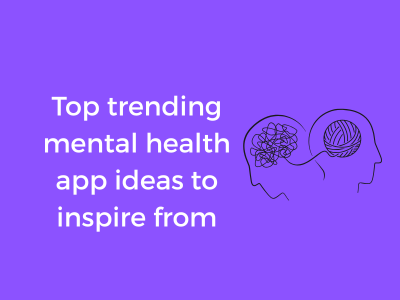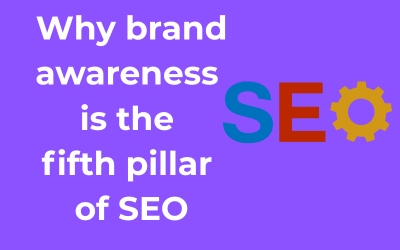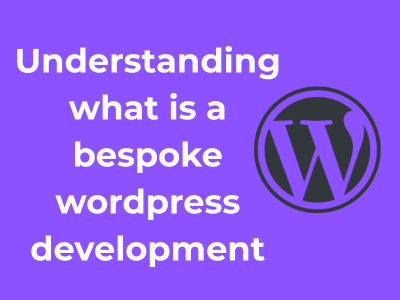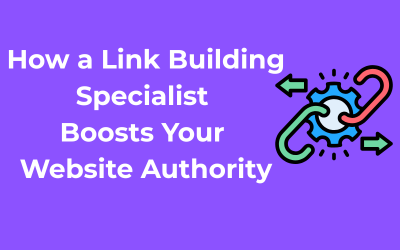In an increasingly connected world, one paradox has surfaced prominently—many people feel more isolated than ever. It’s no surprise that breaking isolation has emerged as a priority in mental health app development. If you’re considering creating a mental health app, enabling users to connect through digital support networks is a game-changing idea!
Why Focus on Connection?
Mental health struggles often lead to feelings of loneliness, and loneliness can exacerbate mental health issues. Studies highlight that having a support system is crucial for emotional well-being. While face-to-face support can be incredibly beneficial, not everyone has access to it. That’s where digital platforms can step in.
A well-designed app can provide safe, judgment-free spaces for people to share their experiences and find a sense of belonging. It’s about replicating the nurturing aspects of a community but in an accessible, digital format!
Key Features to Include
Let’s dive into features that could turn your app into a haven for those looking to connect:
- Peer Support Groups: Create dedicated chat rooms or forums for individuals with shared experiences (e.g., anxiety, grief, trauma). Everyone needs validation, and hearing, “I understand” can be incredibly powerful.
- Anonymity Settings: Privacy is key when it comes to mental health. Allow users to select varying levels of anonymity, letting them participate comfortably.
- Mentorship Pairing: Match people facing challenges with those who’ve overcome similar issues. This builds both empowerment and compassionate connections.
- Guided Group Activities: Consider hosting mindfulness exercises, journaling prompts, or live discussions within the user community.
Inspiration from Existing Apps
We can find inspiration from some successful platforms:
- 7 Cups: Known for providing trained listeners and support groups, this app connects users in meaningful, low-pressure ways.
- Wisdo: Designed to foster connections with people who’ve “been there,” Wisdo offers mentorship-style advice and emotional support.
These apps demonstrate the immense value of blending technology with community to make users feel seen and less alone—something your app could elevate even further!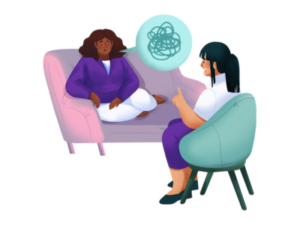
Gamifying Mental Health: How Playful Interaction Promotes Healing
Let’s be honest, life can get a little too serious sometimes. But what if we told you that healing and mental wellness don’t always have to feel like a chore? Sometimes, the best way to address our mental health is to engage with it in a way that feels fun, light-hearted, and, well, a bit like playing your favorite game. Welcome to the world of gamifying mental health!
Why Does Gamifying Mental Health Work?
At its core, gamification is a psychological tool that uses elements of game design—including rewards, competition, and challenges—to keep us engaged. When applied to mental health, it encourages individuals to stick with beneficial habits, explore their emotions, and track their progress in a way that’s interactive and rewarding.
- Engagement over Dread: Who wouldn’t rather complete a relaxing meditation challenge to earn virtual points instead of checking off yet another to-do on a boring checklist? Gamification makes wellness goals less intimidating and more achievable.
- Positive Reinforcement: Completing small tasks such as journaling daily or doing a 10-minute mindfulness exercise often comes with virtual rewards like badges, levels, or some shiny in-game currency. This gives an immediate sense of accomplishment.
- Building Healthy Consistency: Games naturally encourage frequent participation. That consistency can be a vital ingredient in managing issues like anxiety, stress, or even burnout.
How Gamified Wellness Apps are Changing the Game
Innovative mental health apps are leading the charge in turning personal growth into an enjoyable adventure. Let’s explore a few common themes that these apps embrace:
- Adventure-Based Growth: Some apps turn your mental health journey into a full-on narrative fantasy. Imagine being a hero conquering “anxiety dragons” or building a “fortress of mindfulness.” Sounds way cooler than just writing “do my breathing exercises” on a sticky note, right?
- Daily Quests: These tiny, manageable tasks like drinking water regularly, writing one thing you’re grateful for, or taking a short walk earn points or rewards that keep you motivated.
- Community Challenges: Not only can you focus on your well-being, but many gamified apps also foster connection. Users can participate in shared challenges, which creates a sense of camaraderie and accountability.
- Mini-Games for Stress Relief: Think soothing puzzles, mood-lifting trivia, or even virtual pet care, all designed to give you a mental break and help stabilize your emotions.
Emotion Trackers: Daily Logs for Building Self-Awareness
Have you ever found yourself wondering why some days just feel heavier than others? Or why you suddenly feel inspired and cheerful seemingly out of nowhere? Understanding our emotions better can be a game-changer in how we handle our mental health, and that’s where emotion trackers come in. These apps are like a diary for your feelings, but so much cooler and interactive!
What Exactly Is an Emotion Tracker?
An emotion tracker is a digital tool or app that helps you log and monitor your emotions over time. It gives you a safe and non-judgmental space to observe how external events, personal interactions, or even daily rituals make you feel. By spotting patterns in your mood, you can identify triggers and create strategies to manage them effectively.
Why Are They So Effective?
Tracking emotions is more than just noting when you’re happy or sad. It’s about creating self-awareness and maintaining accountability for caring for yourself. Think about it as truly getting to know yourself on a deeper level! Some of the biggest advantages of using emotion trackers include the following:
- Encouraging Reflection: Taking a few moments to jot down how you feel each day encourages mindfulness and reflection. Research shows that this kind of introspection can help reduce stress and build emotional resilience.
- Spotting Triggers: Is your commute home usually stressful? Do meetings at work leave you energized or drained? Once you notice what causes emotional highs and lows, it becomes much easier to create a better balance.
- Improving Communication: If you’re struggling to convey your feelings to a therapist, partner, or friend, emotion logs can be an eye-opener. It provides context and clarity about how you’ve been feeling over time.
What Features Make an Emotion Tracker Stand Out?
If you’re on the lookout for an app to track your emotions, you might wonder what features are worth paying attention to. Here’s what you should keep in mind:
- Easy-to-Use Interface: A clutter-free design ensures that logging how you feel doesn’t become another task to stress about!
- Visual Graphs and Reports: Many apps offer pie charts, graphs, or timelines to visually display your mood trends. Seeing emotional data laid out can provide insights at a glance.
- Customizable Mood Scales: Not all emotions fit into generic happy, sad, or angry categories. Choosing an app with customizable mood descriptors allows you to capture your feelings more precisely.
- Journaling Tools: Some trackers let you pair mood entries with notes about what happened during your day, adding context to your emotional state.
Tips to Get Started With Emotion Tracking
If you’re new to emotion tracking, don’t worry. It doesn’t have to feel like homework! Here are a few ways to ease into the practice:
- Start small—log your feelings once a day or even a few times a week. This consistency matters more than frequency.
- Set reminders so you don’t forget. Life can get busy, and a gentle nudge can help build the habit.
- Don’t overthink it! Be honest with yourself, even if your emotion isn’t perfectly clear. “Neutral” or “meh” days count too!
Real-Time Solutions: Crisis Management Tools at Your Fingertips
Life can throw unexpected challenges at us—moments when the stress feels unbearable or emotions spiral out of control. For those instances, having trusted and effective crisis management tools available on your phone can be life-saving and empowering. Let’s explore how mental health apps are creating innovative, real-time solutions to help individuals weather the storm when it feels like too much.
What Are Crisis Management Tools?
Think of these tools as your pocket-sized lifeline during tough times. Their primary goal? To provide immediate relief, support, and stabilization when emotions hit their peak. They’re designed for quick access, easy usage, and effectiveness in moments of crisis. Apps offering these solutions include techniques like grounding exercises, professional support hotlines, calming sounds, and even guided breathing techniques to help shift the mind and body away from panic.
Why Are They Important?
Not everyone has the ability to immediately reach a therapist or friend when they’re feeling overwhelmed. Crisis-specific features in a mental health app address this gap by providing an immediate outlet and sense of security. Take moments of anxiety, for instance—being able to access calming tools or structured breathing exercises can make all the difference between spiraling further or feeling in control again. In fact, some studies suggest that instant interventions during crisis moments can help prevent long-term consequences.
Popular Features of Crisis Management Apps
- Guided Breathing Programs: Breathing exercises are scientifically proven to calm the body by regulating your nervous system. Apps often include visual or audio guides that lead you through rhythmic breathing sequences, helping ease tension almost immediately.
- Emergency Hotline Integration: Many apps provide easy access to helpline numbers for suicide prevention, domestic abuse, or mental health support. A single click can connect users with a trained professional in real-time.
- “Calm Down” Tools: These might include video or audio content like relaxing visualizations, nature sounds, or mindfulness prompts to reduce heightened emotions.
- Personalized Alerts: Apps can remind users to engage in a coping strategy, hydrate, or take a mindfulness break when needed most, based on data they collect about the user’s activity or mood patterns.
- Virtual Coping Sessions: These sessions, often led by audio or video formats, combine techniques like grounding exercises and meditation to create a sense of stability.
A Real-World Example
One standout example of a mental health app specializing in crisis management is Crisis Text Line. This app seamlessly connects individuals to trained crisis counselors around the clock via text messaging. Similarly, apps like Calm Harm target self-harm urges by guiding users toward distraction techniques or emotional regulation exercises step by step.
How You Could Innovate on These Ideas
If you’re looking to develop an app or expand your mental health offerings, incorporating real-time solutions with personalization could set your idea apart. Think about using AI to recommend specific tools based on a user’s mood logs, or integrating wearable technology to detect stress levels and trigger app responses automatically. Another thoughtful feature could be gamifying relief techniques to make them interactive and engaging—and in turn, more effective.
AI Listeners: Virtual Companions Enhancing Emotional Comfort
Let’s talk about something super fascinating: AI listeners as virtual companions. Imagine having a non-judgmental buddy who’s available 24/7, always ready to listen to your thoughts, support you emotionally, and even offer thoughtful suggestions. No appointments, no waiting times. Sounds amazing, doesn’t it?
What Exactly Are AI Listeners?
AI listeners are powered by advanced artificial intelligence designed to simulate human-like conversations with empathy and understanding. These innovative tools create a safe space where you can freely express yourself and process your emotions without fear of judgment or criticism. They don’t replace human connections or therapy, but they can definitely complement them in some meaningful ways.
Why Do We Need Them?
Let’s face it: Sometimes, we just need to vent or discuss our feelings, but we might hesitate to burden loved ones or don’t feel ready to talk to a therapist. That’s where AI listeners come in. They’re always there, providing emotional support when you need it most.
- They’re convenient and available anytime.
- No pressure or fear of being judged.
- Perfect for introverts or those hesitant about traditional forms of support.
Cool Features of AI Listeners
With technology advancing every day, these AI companions offer incredibly helpful and innovative features:
- Empathy Simulation: AI tools like Woebot and Replika are designed to interpret and respond to emotional cues, making their responses feel genuinely supportive.
- Mindfulness Reminders: Many AI companions incorporate mindfulness techniques, offering tips for deep breathing, grounding exercises, and more.
- Reflective Listening: Some apps allow you to vent, repeating key points back to you to ensure you feel understood and validated.
- Customization: Personalize your experience by setting preferences, everyday check-ins, or mood tracking.
Here’s Why They’re A Game-Changer
AI listeners provide an easily accessible avenue for emotional support. Since they’re always available in your pocket, they empower people to seek help in moments of need. They work great as a first step toward building awareness about mental health, engaging those who might hesitate to reach out for traditional therapy.
Plus, these apps normalize talking about emotions — a critical step in promoting mental well-being. They help you define, express, and even manage feelings over time. For someone grappling with the complexities of mental health, having a virtual “listening ear” can really lighten the load.
A Friendly Reminder
Even though AI listeners are fantastic tools, remember, they’re not a substitute for therapists or professional mental health care. Instead, think of them as a bridge to better mental health, encouraging reflection and growth until you’re ready or able to seek professional support.
Personalized Care: Adapting Scientific Techniques for Self-Help
When it comes to mental health, there’s truly no “one-size-fits-all” solution. Everyone’s journey is unique, and that’s why personalization is such a game-changer in mental health app development. Imagine having an app that’s more like a pocket-sized therapist—not only understanding your struggles but also tailoring scientifically-backed solutions to help you thrive. Sounds amazing, right?
Let’s dive into the magic of personalized care and explore why it’s an essential feature for modern mental health apps.
Why Personalization Matters
Ever tried following generic mental health advice or broad wellness strategies, only to feel like they missed the mark? That’s because these methods often overlook your individual needs. Personalized care, on the other hand, digs deeper. It uses science-driven techniques, grounded in behavioral therapy, mindfulness, and cognitive exercises, but adapts these strategies based on your unique circumstances, habits, and goals. When done right, this approach can significantly improve engagement and outcomes for users.
Think of it as having a toolkit designed just for you—it knows when you’re feeling demotivated, overwhelmed, or anxious, and provides real solutions tailored for your state of mind. Sounds empowering, doesn’t it?
Features to Watch For in Personalization
- Detailed Onboarding Assessments: Apps with comprehensive questionnaires can help users get better results by gathering information about their mental well-being, stress levels, and coping mechanisms.
- Personalized Activity Suggestions: Based on your mood or challenges, the app may recommend mindfulness exercises, journaling prompts, or mood-boosting activities tailored to you.
- Progress Tracking: Apps that show your progress and celebrate small wins can be incredibly motivating. Imagine seeing how far you’ve come in managing anxiety or building a consistent self-care routine.
- Adaptive Feedback Systems: Some apps are taking things a step further with Artificial Intelligence (AI). AI-powered apps can adapt feedback dynamically, offering even more precise guidance.
Science Meets Self-Help
What makes this idea especially brilliant is how these apps bring credible, science-based tools into your daily life. It’s like having access to Cognitive Behavioral Therapy (CBT), Acceptance and Commitment Therapy (ACT), or calming meditation practices—all without leaving your home. Many apps today use evidence-based methodologies to ensure the advice and activities offered are not just feel-good fluff but truly beneficial pathways to enhanced mental health.
Some platforms even take data from research studies to incorporate techniques customized for specific challenges like sleep trouble, burnout, or social anxiety. The end result? A program that evolves and grows with you—like having a supportive coach by your side.
Exciting Trends in Personalized Mental Health Apps
- AI-Driven Insights: Advanced algorithms detect patterns in your responses or daily interactions and offer precision-tuned solutions.
- Integration with Wearables: Apps connected to your smartwatch or fitness tracker can gather stress or activity data, making recommendations rooted in your physical state.
- Hybrid Customization: Some apps combine DIY modules (self-paced exercises) with opportunities to connect with licensed therapists for deeper insights.
Bridging Traditional Therapy and Digital Accessibility
In today’s fast-paced world, therapy needs to be as accessible as our next-day delivery services or streaming platforms. But here’s the catch: it has to retain the warmth and authenticity of sitting in a room with a therapist. This is where digital platforms are stepping up, creating a beautiful bridge between traditional therapy and the digital conveniences of the modern era.
Why Is This Merge So Important?
We all know that traditional therapy has been a time-tested solution for mental health woes. Many of us feel comforted by face-to-face interactions or structured therapeutic approaches developed after years of psychological study. However, the reality is that there are barriers to accessing traditional therapy, such as:
- Cost: Therapy sessions can be heavy on the wallet.
- Location: Not everyone has a therapist’s office nearby, especially in rural or remote areas.
- Stigmas: Many still feel hesitant to walk into a therapy clinic due to societal perceptions.
- Time Constraints: Scheduling appointments amidst busy lives can be a challenge.
The rise of digital platforms is geared toward addressing such limitations while retaining the core principles of traditional therapy. We’re not replacing therapists here; we’re empowering them—and their clients—with tools to connect better and faster.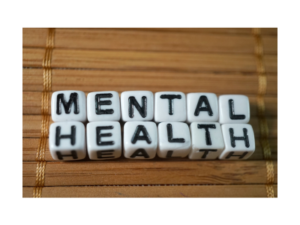
What Does Digital Accessibility Look Like?
Picture this: You’re feeling overwhelmed at 10 p.m., a time when most traditional therapy clinics are closed. Digital platforms have paved the way for solutions that wouldn’t have been possible before, such as:
- Video Therapy Sessions: Platforms offering online therapy let you connect with licensed professionals from the comfort of your safe space. No more commuting or waiting rooms!
- Therapist Matching Services: Apps now use algorithms to match you with therapists based on your preferences, concerns, and even cultural background.
- Text and Chat Therapy: Sometimes, typing out how you feel is less intimidating than saying it aloud. Apps provide 24/7 chat support, connecting users with therapists within seconds.
- Hybrid Approaches: A mix of traditional in-office therapy augmented by digital checks-ins and resources helps create a balance. Imagine your therapist uploading session notes or weekly journal prompts through an app!
Behind the Tech: Human Connection Still Leads
What makes this hybrid approach so incredible is that it combines the best of both worlds. The human touch of traditional therapy remains crucial, but digital innovations amplify its reach and impact. Technology can’t replace compassion, but it can facilitate it by enabling therapists to cater to more clients without compromising on quality.
How Can These Platforms Inspire New Ideas?
If you’re brainstorming your own app focused on bridging therapy and digital access, think about these possibilities:
- Can you create a platform that allows therapists to host their own virtual “offices” complete with scheduling and billing?
- How about AR or VR-based therapy sessions that replicate the comfort of an office environment?
- What about apps that use anonymized, data-driven insights to nudge users into keeping up with therapy exercises between sessions?

